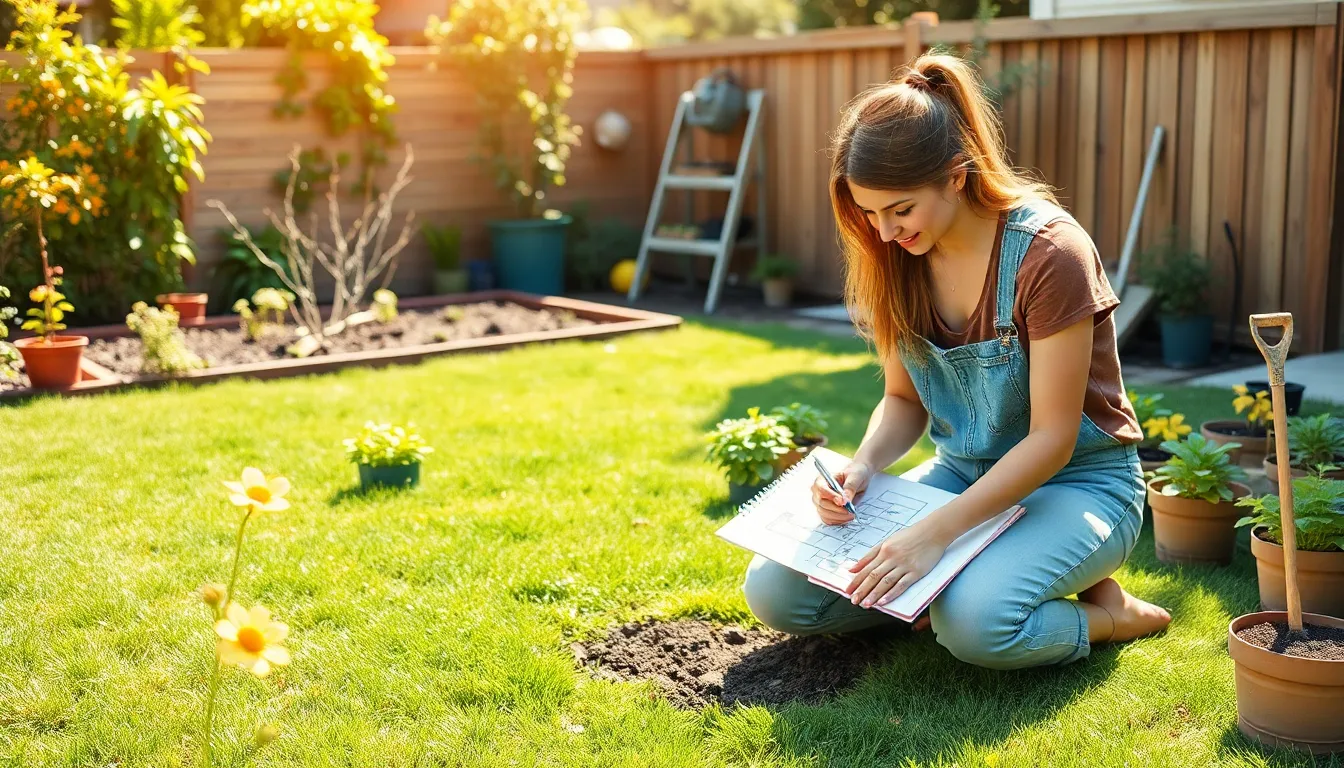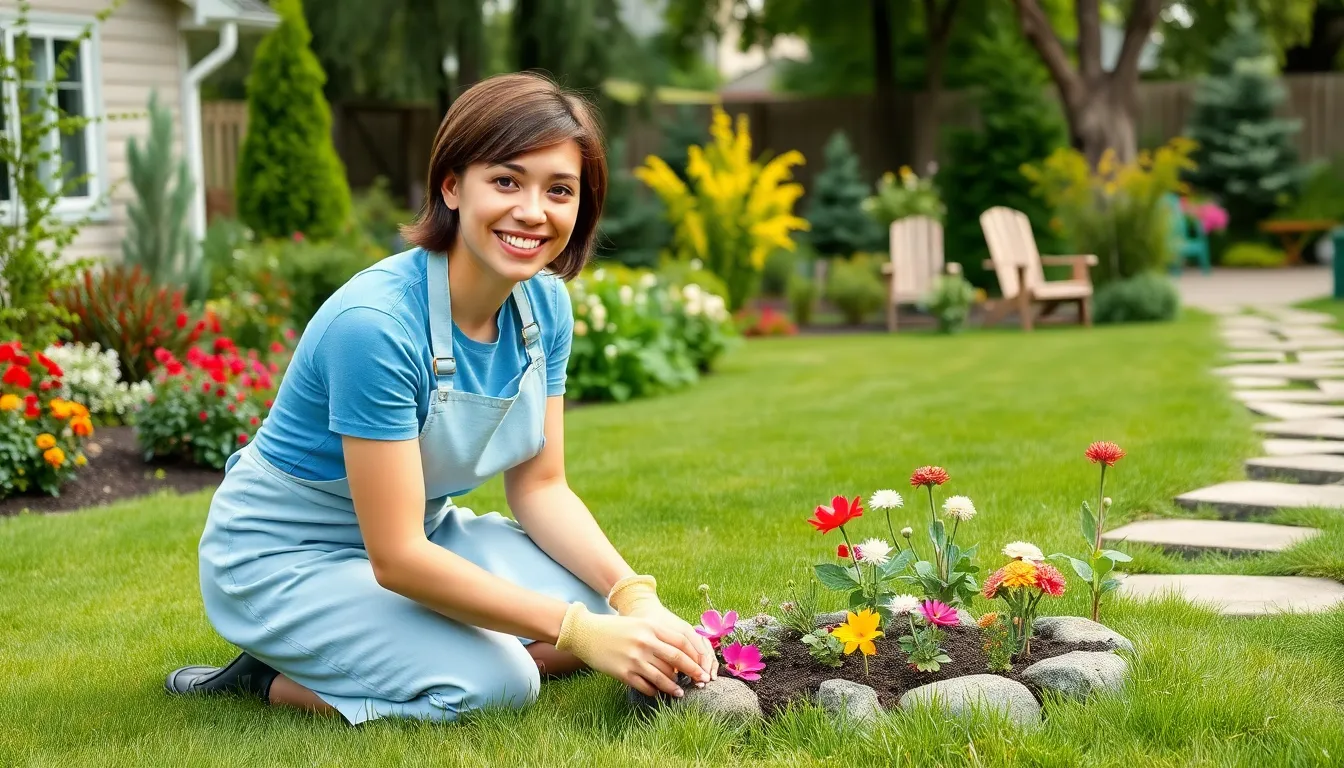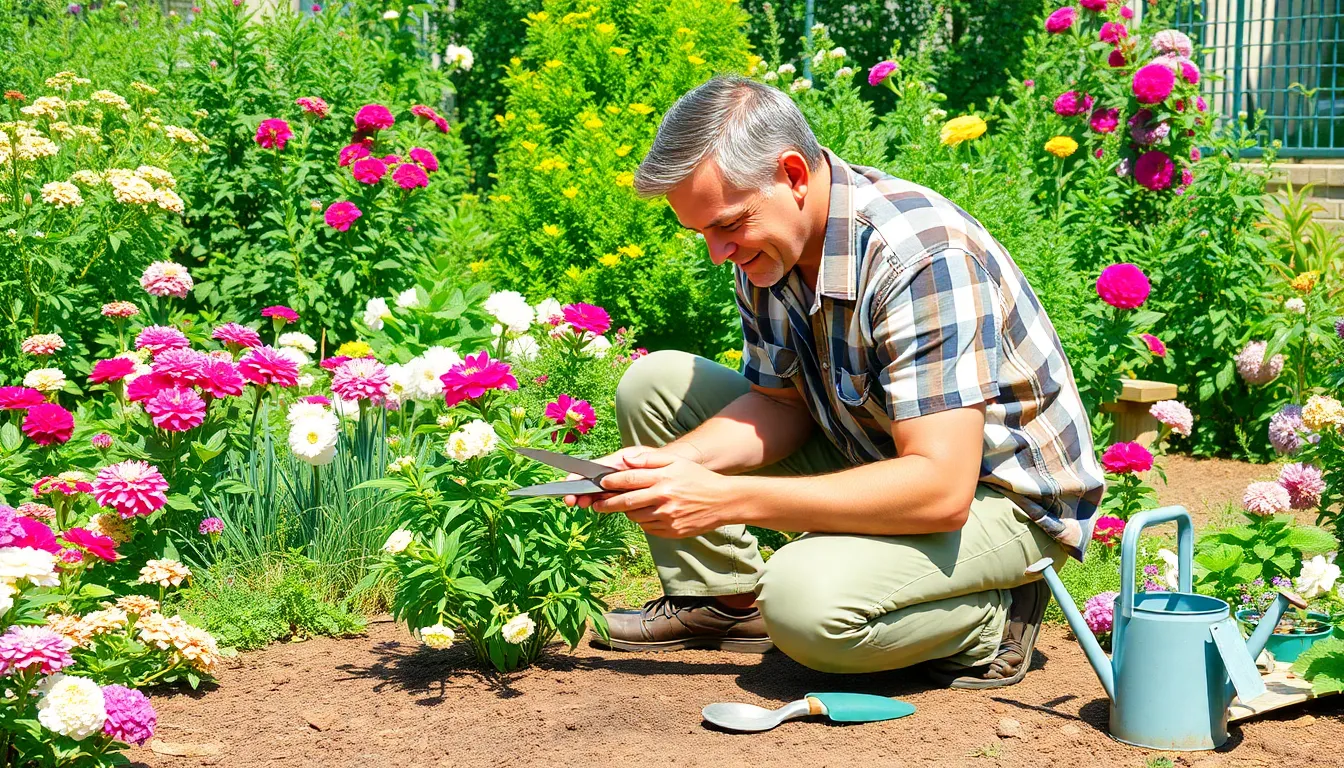Transforming a yard into a lush paradise might seem like a task for the pros, but it’s easier than it looks. Landscaping for beginners is like baking a cake; you just need the right ingredients and a sprinkle of creativity. Whether it’s planting vibrant flowers or creating a cozy outdoor nook, anyone can dive into the world of landscaping without needing a degree in horticulture.
Table of Contents
ToggleUnderstanding Landscaping Basics
Landscaping involves planning and executing designs to enhance outdoor spaces. Beginners can grasp essential concepts while enjoying the creative process.
What Is Landscaping?
Landscaping refers to modifying the visible features of land in gardens, yards, and other outdoor areas. This process includes elements like plants, trees, flowers, pathways, and outdoor structures. Designers focus on aesthetics and functionality when creating these environments. Components such as soil and layout also play crucial roles in effective landscaping. Educating oneself on the basics fosters skill development, enabling beginners to create appealing spaces.
Importance of Landscaping for Beginners
Landscaping benefits beginners in several ways. A well-designed outdoor space boosts curb appeal and increases property value. Engaging in landscaping promotes mental well-being, offering a therapeutic escape from daily stresses. Additionally, it encourages physical activity through tasks like planting, trimming, and maintaining gardens. Beginners gain experiences that foster creativity while learning essential gardening techniques. Knowledge of landscaping enhances an individual’s connection to nature, enriching everyday life.
Planning Your Landscape

Planning creates a solid foundation for any landscaping project. Beginners benefit greatly from careful consideration of their outdoor space and specific objectives.
Assessing Your Space
First, evaluate the area to understand its features. Identify the location of sunlight and shade throughout the day. Note any existing structures, such as fences or patios, that might influence design choices. Determine the soil type and drainage aspects to ensure successful plant growth. By mapping the dimensions and layout, individuals gain insight into opportunities and challenges present in their landscapes.
Setting Goals and Budget
Establishing clear goals proves essential for successful landscaping. Consider what aspects to emphasize, such as aesthetics, functionality, or ecological benefits. Create a realistic budget that encompasses materials, plants, and potential professional help. Define priorities based on personal preferences and local climate conditions. By aligning goals with financial resources, individuals can develop a coherent strategy tailored to their specific landscape vision.
Choosing the Right Plants
Selecting suitable plants forms a crucial part of successful landscaping. Beginners should focus on plants that thrive in their local environment while considering aesthetic preferences.
Native vs. Non-Native Plants
Native plants adapt well to local climates and soil conditions. They often require less maintenance and water. Select plants like echinacea or black-eyed Susans for vibrant color and natural beauty. Non-native plants, while often attractive, may demand more care and resources. Some non-natives, such as ornamental grasses, can thrive if provided with adequate attention. Balance is key; mixing both types can create a diverse and resilient landscape.
Seasonal Plant Selection
Seasonal planting enhances the visual appeal of a garden throughout the year. Choose spring bloomers, like tulips and daffodils, to welcome warmer weather. Summer offers options like sunflowers and zinnias, which provide cheerful colors. For fall, consider planting asters or ornamental kale to extend the season’s beauty. Winter interest can be achieved by incorporating evergreens or colorful bark plants. By selecting plants for specific seasons, beginners can design a dynamic and inviting landscape.
Designing Your Layout
Designing a landscape involves thoughtful planning and creativity. By understanding essential design principles, beginners create a cohesive and attractive layout.
Essential Design Principles
Consider balance when arranging plants, structures, and features. Balance helps achieve harmony and prevents an overly cluttered appearance. Unity also plays a critical role; it establishes a consistent theme throughout the space. Visual flow guides the eye through the landscape, making transitions between elements seamless. Lastly, proportion affects how features relate to each other. Ensuring that plants and structures match in scale enhances overall appeal. Beginners should keep these principles in mind to create a visually pleasing environment.
Creating Visual Interest
Creating visual interest involves layering textures and colors. Mixing plant heights adds depth to the design, making it more engaging. Incorporating hardscape elements like pathways, stones, and garden furniture introduces structure and functionality. Seasonal plant choices keep the landscape dynamic, providing vibrant visuals throughout the year. Additionally, the use of focal points such as sculptures or water features draws attention and encourages appreciation. These strategies contribute to a captivating outdoor space that invites exploration.
Maintenance Tips for Beginners
Maintaining a landscape requires attention to detail and ongoing effort. Beginners benefit from establishing a routine that ensures their outdoor spaces flourish.
Watering and Fertilizing
Watering represents a critical aspect of plant care. Beginners should water deeply and infrequently to encourage strong root growth. Adequate moisture often depends on local climate and the type of plants selected. Fertilizing adds essential nutrients, promoting healthy growth. Choosing a slow-release fertilizer helps maintain consistent feeding. Spring represents a perfect time to apply fertilizer, aligning with the growing season. Over-fertilizing can damage plants, so it’s key to follow product instructions and observe plant responses.
Pruning and Weed Control
Pruning supports plant health and enhances appearance. Regularly trimming dead or overgrown branches prevents disease and encourages new growth. Seasonal pruning aligns with the specific needs of each plant type. Beginners should learn when to prune different species for optimal results. Weed control operates as another essential maintenance task. Hand-pulling or using mulch helps prevent competition for nutrients and water. Staying consistent with these tasks limits weed growth and supports the overall health of the landscape.
Landscaping offers a rewarding journey for beginners eager to enhance their outdoor spaces. By embracing creativity and understanding the fundamentals of design and plant selection, anyone can create a beautiful landscape.
The process not only beautifies a yard but also fosters a deeper connection with nature. Through thoughtful planning and consistent maintenance, beginners can cultivate an inviting environment that reflects their personal style.
With patience and dedication, the transformation of an outdoor space becomes not just a project but a fulfilling experience that enriches everyday life.



